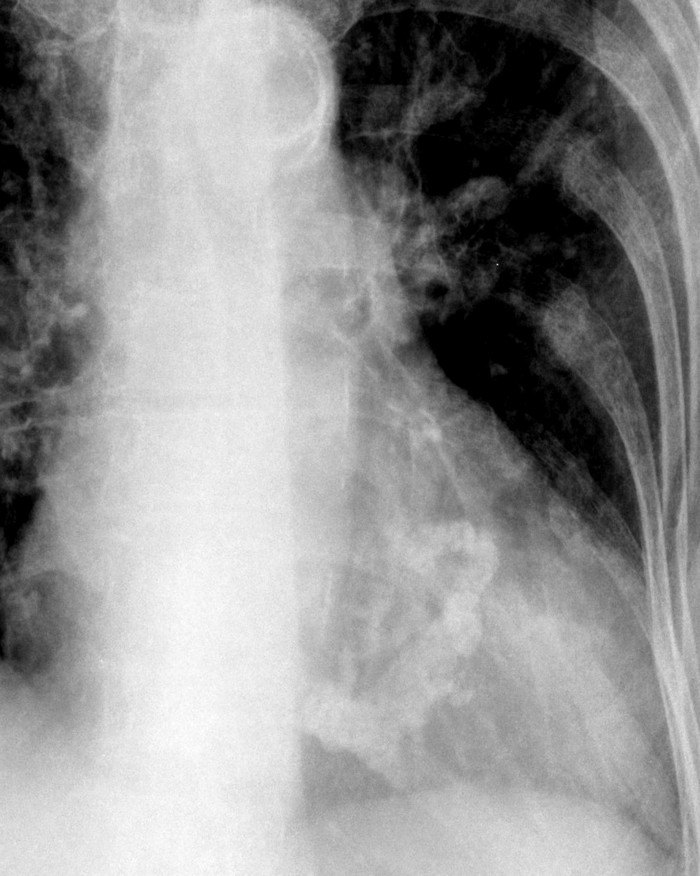Mitral regurgitation chest x-ray
|
Mitral Regurgitation Microchapters |
|
Diagnosis |
|---|
|
Treatment |
|
Case Studies |
|
Mitral regurgitation chest x-ray On the Web |
|
American Roentgen Ray Society Images of Mitral regurgitation chest x-ray |
|
Risk calculators and risk factors for Mitral regurgitation chest x-ray |
Editor-In-Chief: C. Michael Gibson, M.S., M.D. [1]; Associate Editor-In-Chief: Cafer Zorkun, M.D., Ph.D. [2]; Varun Kumar, M.B.B.S.; Lakshmi Gopalakrishnan, M.B.B.S.
Overview
The chest x-ray in individuals with chronic mitral regurgitation is characterized by enlargement of the left atrium and the left ventricle.
Mitral Regurgitation Chest X-ray Finding

The pulmonary vascular markings are typically normal, since pulmonary venous pressures are usually not significantly elevated. Calcification of the mitral annulus is not infrequent, seen in up to 35% of elderly patients on echocardiography which is more sensitive than CXR. It typically begins around the margins of the posterior leaflet forming a “C” (as in this case) - eventually with anterior leaflet involvement the “C” closes forming an “O”. Although it is associated with mitral regurgitation this is usually of trivial amounts. As opposed to aortic valve calcification, calcification of the mitral annulus is not significantly associated with stenosis of the valve and contrary to previous thought, nor is it associated with strokes - when other factors are controlled for.
The calcification however can impede AV nodal conduction and therefore lead to varying degrees of heart block.
Pathologically it is important to distinguish annular calcification, which is not on the leaflet, and is covered with intact endothelium, from leaflet calcification in stenotic valves secondary to rheumatic fever.